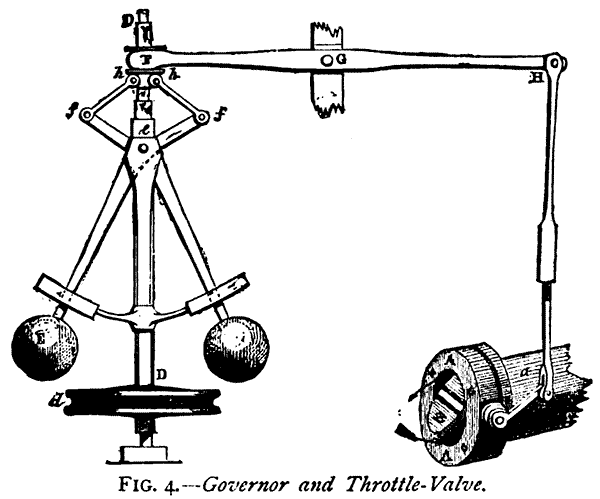
Polished Flyball Governor Nov 23, 2006
This ancient piece of equipment is a flyball governor. (It's the slender metal thing in front of the large blue alternator head.) The invention of the device is widely credited to James Watt in the late 1700s (although the original idea may have come from Christiaan Huygens).
The governors in this station were built by Escher-Wyss in Zurich, Switzerland, based on an adaptation of James Watt's version.1 They look different than the flyball governors in the Toronto Power Company generating station.
The purpose of the governor is to control the rotational speed of an object. In this case, it controls the rotational speed of the turbines at a steady 250 RPM (revolutions per minute). The governor doesn't directly control the turbines. Rather, it controls the quantity of water flowing into the turbine by adjusting valves, which in turn affects turbine speed.

In the late 1970s and 1980s, many of the station's processes were automated. The flyball governors were included in this automation process and they are now managed by programmable controllers.
- Ball, N. R. (2005). The Canadian Niagara Power Company Story. Erin, Ont.: Boston Mills Press in association with FortisOntario.